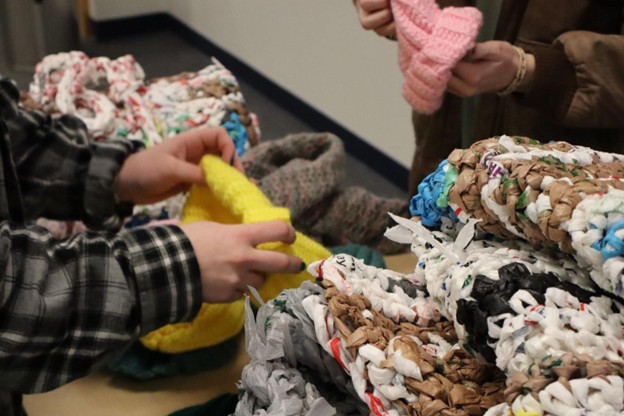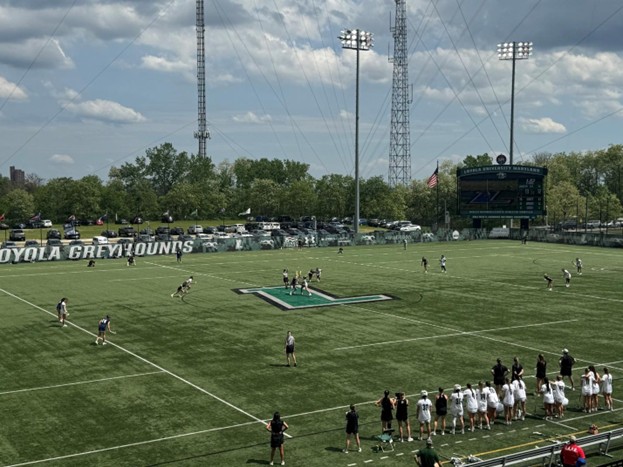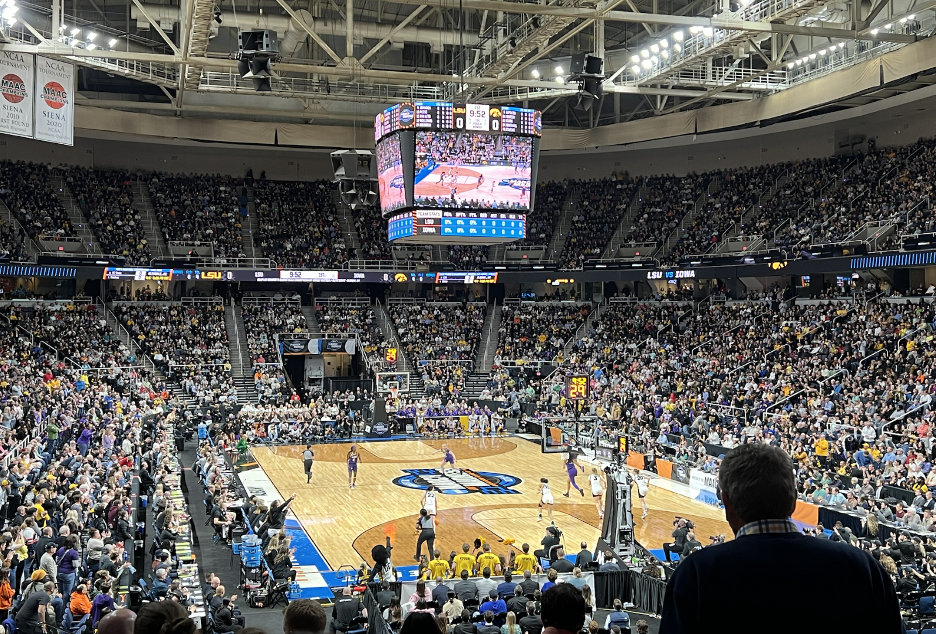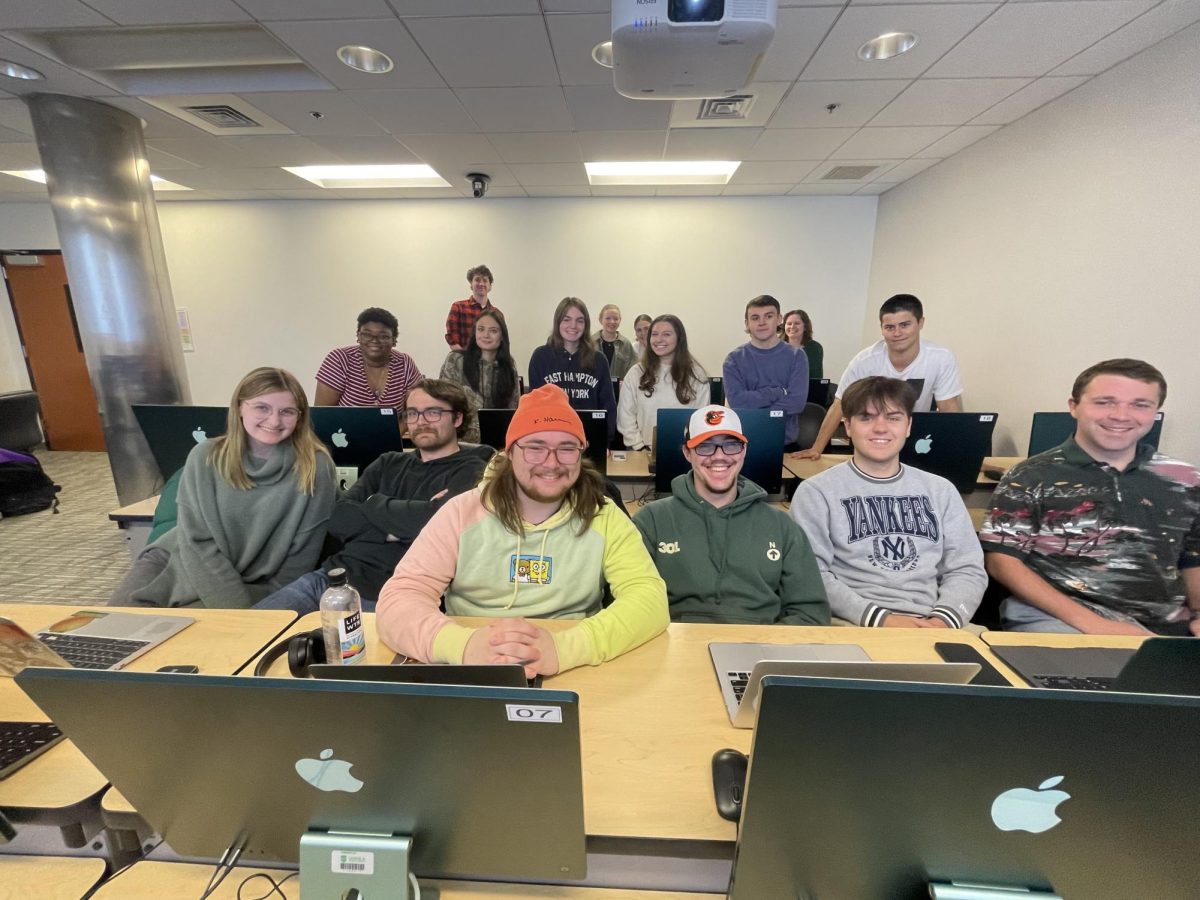“Unrested” is a collection of mixed media and a virtual reality piece that was prompted by the research team that uncovered Loyola’s involvement and profit from the slave trade. “Unrested” was created by three artists from strikeWare collective: Mollye Bendell, Christopher Kojzar, and Jeffrey L. Gangwisch. From now until Feb. 16 you can view the pieces that portray the reality of the Jesuits at Loyola owning slaves and selling them and how our university has benefitted from this. The artwork is there to teach the Loyola community about this history that has been largely unknown through immersing themselves in art.
“[strikeWare] are an artist collective that really think about the intersections of archival objects and history, but then taking that and creating works that engage the community, that engage interactivity, and that use these newer digital media methods,” Megan Rook-Koepsel said, director and curator of the Julio Fine Arts Gallery.
Rook-Koepsel has been at Loyola for seven years and is in charge of choosing the artists who showcase their work in the gallery. By looking at different websites and artists in Baltimore, she was able to find the strikeWear collective a few years ago.
“These artists really are pushing those boundaries a lot and so I think it’s a really good opportunity for our students to do that but at the same time I think when I was reaching out to them, it was really important that they could engage some kind of topic of history and the past,” Rook-Koepsel said.
Rook-Koepsel explains how the artists have come to the agreement of what they were going to create. By tying in the history of Loyola, the artists are able to not only teach students about their own school’s culture and history, but express the history through art. Rook-Koepsel talked with strikeWear about the ideas within the Loyola community’s history.
“The fact that everyone is really thinking about this at this point and that the campus is really needing to grow some of this history so it was a little bit of both. [strikeWare] had thrown out a few ideas, and we had thrown out a few ideas and then as the research around all of this started to crystallize that’s when I was like, ‘What if we really focus on this,’” Rook-Koepsel said.

Cherie-Amor Clemmons ‘25 works in the gallery and is interested in the arts and is a part of art clubs on campus. Clemmons filled in some facts about one of her favorite pieces in the gallery. The 272 bricks symbolize the 272 slaves that were bought and sold by Goergetown, and Loyola profited from the money. Clemmons talks about the brick and quilt piece as her favorite in the gallery.
“I really enjoy the quilt in the middle because it’s actually the artist’s great grandmother’s quilt who was a slave and has been passed down generations in his family,” Clemmons said.
Clemmons has worked in the Julio Fine Arts Gallery for about a semester and has seen many different pieces of art while working there. Being a part of the gallery is something Clemmons enjoys by being able to experience helping out artists put up the exhibits. Being able to talk with the artists creates a more intriguing and fun atmosphere. Clemmons enjoys being a part of the gallery when they change the exhibits.

“A lot of people come in and they talk and all the artists come in and they talk about their pieces. It’s really cool to be able to work behind the scenes, and then sit here and then watch everyone’s first time reactions in the art program,” Clemmons said.
The last time to see the gallery is Feb. 16, so try and make your way to the Julio Fine art gallery to experience “Unrested” and create your own opinions on the pieces of work.













































































































